
Today, I enjoyed the loveliest of meetings.
After leaving work, I met with a second grader named Mackenzie. She loves to write and wanted to meet a “real writer” to get her books signed and ask some questions. One of her questions really struck me. “What causes you to write?” The question was so sweet, because it seemed like she was looking for a source of inspiration for her own work, and although I write, I didn’t feel able to give that to her. Her inspiration was already inside of her and she didn’t need me at all. I told her that you’re either a writer or you aren’t. A writer can go 20 years without actually writing, but that is a writer who is collecting information to use in future works. Having spent 16 years in education, and now feeling that calling to write again, I believe that a writer is a writer for life. Yes, of course “writers write”, but I don’t think that means we are failures or less effective if we have active periods and inactive periods. That wonderful calling may come once a day, once a year, or once a decade. I really don’t think the value of a writer is diminished by level and frequency of inspiration. If you’re a writer, you’re a writer for life. Related Blog Posts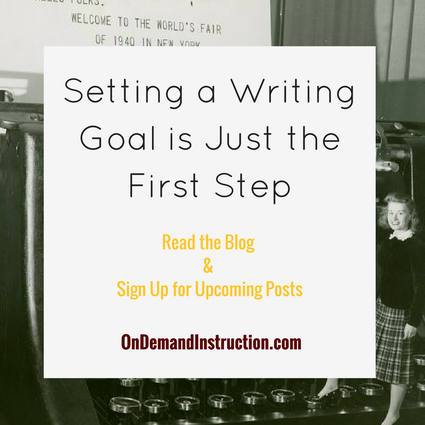
Writing goals in themselves can be difficult to figure out. While in school, our teachers and professors handed out writing goals, so we never had to decide how much or when to write.
We just wrote as much as was required, answered the prompts, and submitted the work on time, because few instructors encourage students to set their own writing goals and manage their progress. All this leaves most of us at a disadvantage in setting our own writing goals. To set a goal, start with the time limit and create a goal for the year. In the next year, is it reasonable to write three books, one novel, 12 blog posts, a series of short stories, or a collection of poetry? What jumps out as the stack of paper you envision having in your hand at year’s end? Once you solidify that in mind, you have a writing goal, which might need some tweaking along the way, but start with a general goal at least. Working backward from the goal With a goal in hand, you can work out how much effort is needed to achieve it by year’s end. If your goal is to write a 250-page novel, then you need to write 20 pages a month to get there. If your goal is to write a blog a month, then it is just one per month to meet that goal. If the goal is to complete a series of short stories, perhaps two stories a month are a reasonable rate. and write. Regardless of what you are writing, what genre, and what your intentions for your goal, you absolutely must write for 10 minutes per day and you must read for 10 minutes per day.
Now, it can feel a bit like this is over-simplifying the task of organizing one’s writing, but it is just the first step. You see, after you set that goal, work backward for the year, then you need to add in the steps to reaching the goal. For example, if I am going to write a 250-page novel this year at 20 pages per month, I will need time to brainstorm, outline, rough draft, edit and revise, and review before I have 20 completed pages per month.
The same is true of any goal. Take your monthly goal and brainstorm what is needed to reach it. What do you need to do to produce 20 pages, 2 stories, 1 blog post, or 10 poems? Create a list of those steps. Setting up a daily schedule Really there are only two things that every writer must do on a daily basis to write well and improve in practice—read a little and write a little. Related Blog Posts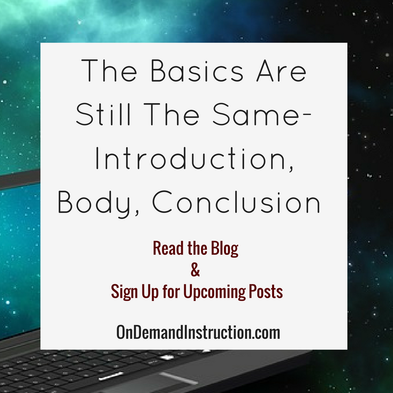
A student asked me the other day how to start off an essay. I responded with my usual summary of what goes into an introduction paragraph.
She stopped me halfway through and said, “No, not that. How do I start MY essay?”. After some prodding, I came to realize that this student believed that every essay is different and requires a different formula for its construction. Believe it or not, this is pretty common. Writers oftentimes feel like every piece of writing is so extraordinarily different as to require a different structure, different tone, and different everything. Sure, there are some different elements to different essays. For example, using the same tone in a persuasive essay as an expository essay is going to throw off the reader and miss the paper’s point. Now the reader stops learning about the topic and is being convinced to make a decision about it. Every essay prompt is different, and there are different styles of writing. Absolutely true.
What is also true is that the basic essay format works. It has worked for decades, and it still works. There is wiggle room and space for creativity too, but it does still work.
OK, so what is the basic organization for an essay? Introduction: Hook your reader’s attention, state the thesis in a strong manner, and give broad, general support which will be explained later in the paper. Body: Get into the details. Expound upon the details which support the thesis statement: research, quotations, facts, figures, statistics, and your unique analysis that presents your thesis statement as well documented. Conclusion: Wrap it up with academic professionalism. Give your reader the summary of what is really important here; this is your last chance to make a great case. Make life easy on yourself and use what works–introduction, body, and conclusion. Take a look over these videos for a more in-depth look at how the structure looks. Introduction Body Conclusion Related Blog Posts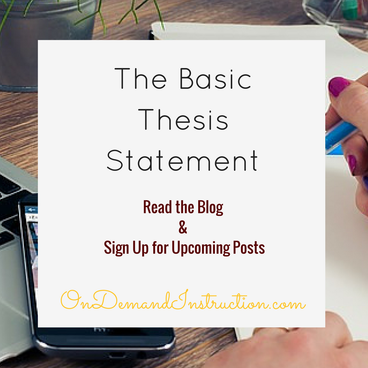
Novice writers tend to be uncomfortable when stating their opinions in essays, letters and other pieces of writing.
Sometimes, their lack of writing experience makes them feel like their ideas are less important than others. Although novice writers may be just learning about writing or may be returning to writing after a long absence, their opinions are as valid as anyone else’s viewpoints are. So, how can a novice writer state an idea, especially a personal idea, with confidence? Try using the basic thesis statement, which is described in The Simple Guide to Thesis Statements and Support.
In the basic thesis statement style, writers start out with a thought they want to share then place one of these phrases before it:
By stating one of these phrases before the opinion, the thesis comes out more naturally and smoothly for many beginning writers. Sometimes just having a format to follow can make the writing process much simpler. Take a look at these examples:
A writer could compose any number of thesis statements using the basic thesis statement format. It is easy to follow, and it is easy to remember. Once a beginning writer feels comfortable with the basic thesis statement and wants to elevate the basic thesis statement, simply leave off the introductory phrase. Here are a few examples: I think that only organic foods should be served in school lunches. Changes to: Only organic foods should be served in school lunches. I feel that dog breeders should only be allowed to breed their dogs when the animal shelters are empty. Changes to: Dog breeders should only be allowed to breed their dogs when the animal shelters are empty. I believe that Stephen King is the best contemporary American writer. Changes to: Stephen King is the best contemporary American writer. The basic thesis statement format is a simple method to get writers started with thesis statements. It can increase a writer’s comfort level and improve the quality of the initial thesis statements. And it can be used in essays, letters and everyday writing. Try out the basic thesis statement format to find out how easy it is to use. Related Blog Posts
What? Start a fight?
A few years back, I was talking to a teacher who directed her students to compose meek and mild thesis statements so as not to offend any readers. I shared my opinion that a competent writer should be able to state any opinion or hypothesis professionally and academically. She disagreed, stating that a smooth relationship between reader and writer trumped all other issues in writing. Many of the great works started fights, and that is a good thing. We need disagreement, we need challenges to the status quo and we need to push the boundaries of agreement to question what we are doing. What if Galileo chose to placate the Catholic Church instead of publish his materials on the solar system? Would we be living in a polite, the-sun-spins-around-the-earth kind of world?
If Charles Darwin had feared ruffling anti-science feathers, would he have shared his findings that demonstrated humans likely evolved over time, just as all creatures do?
And what about Harriet Beecher Stowe? Should she have kept her stories to herself and hidden away the miseries of the American slavery system in preference of appeasing the slave-owning class? Not at all, in my opinion. When you have something valuable to say, you need to say it and pack it with punching force. When your research leads you down a path that may anger the state of affairs, then publish that research without inhibition. Truth and interpretations change over time. Just 50 years ago, Jim Crow laws were accepted in the South but today they are unthinkable. 150 years ago, it was acceptable to own and breed human beings for profit, but today our laws protect individuals from slavery. Why is this? These changes in behaviors came about because people stated their theses and hypotheses. Yes, their theses started fights, and these were fights that needed to be fought to address inequality. These are the important fights to engage in, and writers lead the way by putting their ideas out there. So, don’t bother trying to please anyone with your writing. When you have a thesis statement, state that opinion with force and power, though do it professionally and academically. Your readership may disagree, may grump and grumble. That is OK. If your writing is going to realize an effect, then you may need to poke a bear now and then. Want to learn more about strong thesis statements? Check out The Simple Guide to Thesis Statements and Support. Good luck with your writing! 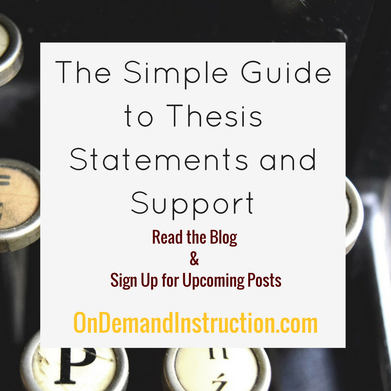
During my 18-year long career as a language arts and social studies teacher, I focused on a couple of different writing lessons.
One of those was how to construct and support a thesis statement. Regardless if my students were in middle school or college level, many of them found the concept of a thesis statement overwhelming. To help my students understand, write and support thesis statements, I created dozens of resources–videos, handouts, info-graphics and examples. In the book The Simple Guide to Thesis Statements and Support, I compiled these resources into a single book. This way, a novice writer could learn about this challenging writing element efficiently. When writing this book, I wanted to appeal to a variety of learning styles. I included infographics to assist visual learners, explanatory videos to help auditory learners and written explanations for learners who want to see how the writing works. Who would benefit from this book? Students from middle school through undergraduate college will learn how to construct better writing. Parents who want to support their students with their homework assignments can use the book as a manual to assist them through writing tasks. Adults returning to school after years away from the classroom can get a refresher on lessons learned years ago. My sincerest hope is that this book will support writers with their essays, letters, research and professional writing. The book is available through the Shop link on the website. The Simple Guide to Thesis Statements and Support |
About the SiteWelcome, Writers! Archives
September 2023
|

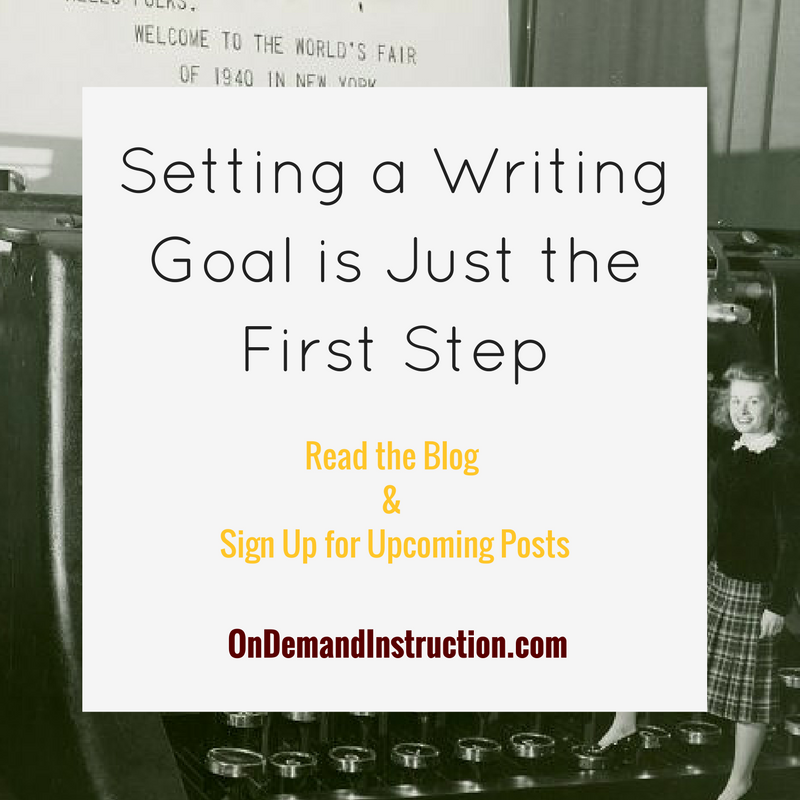








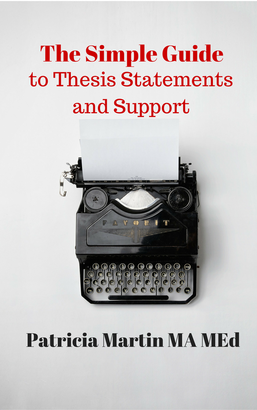
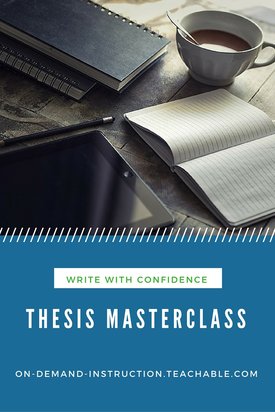
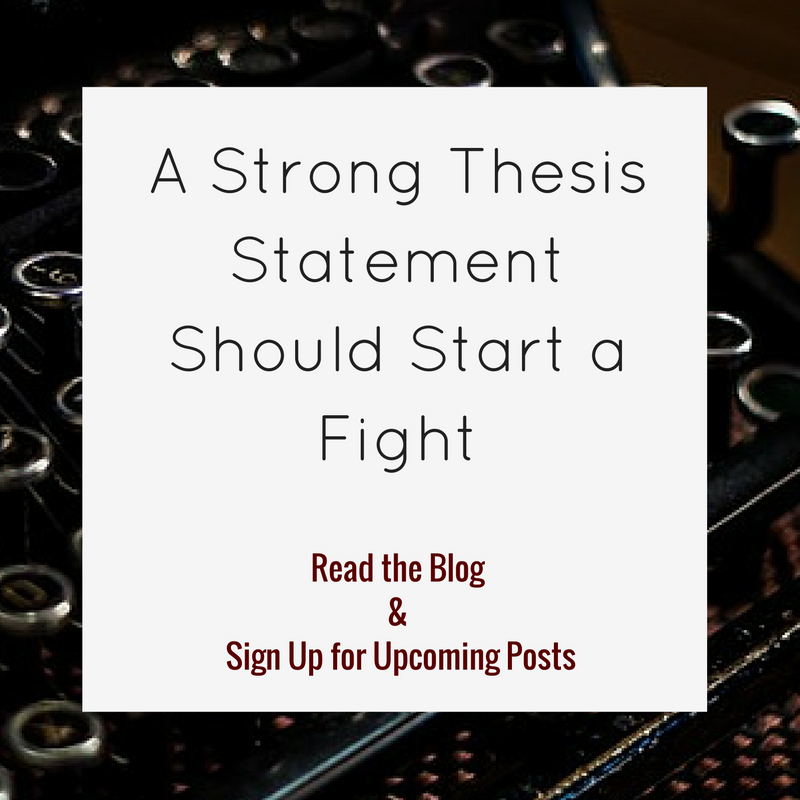


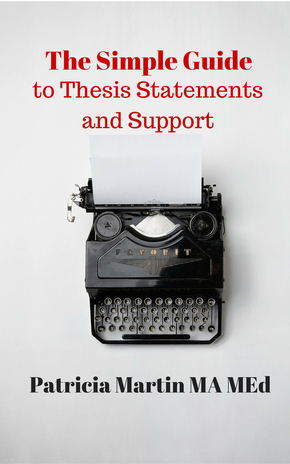
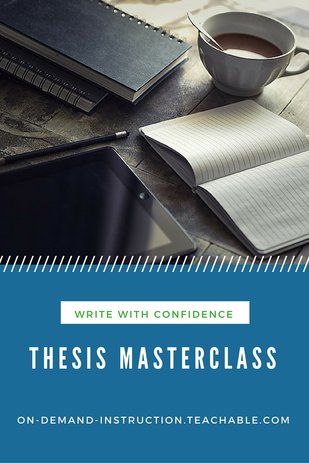
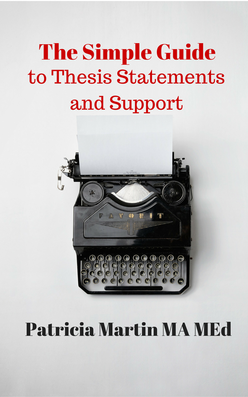
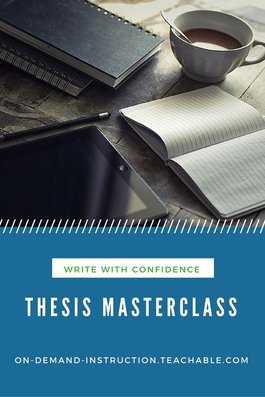

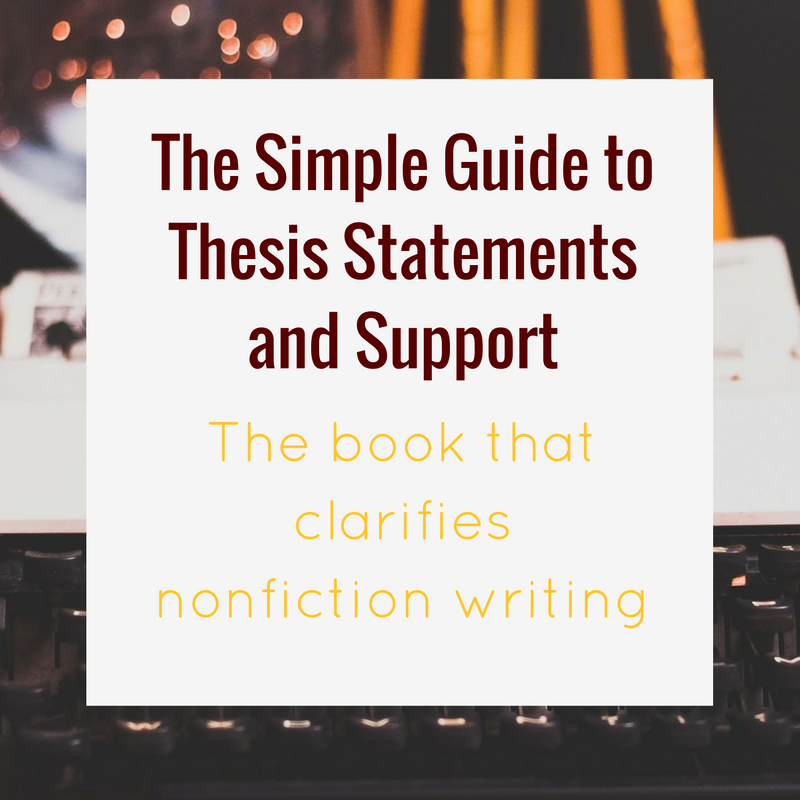
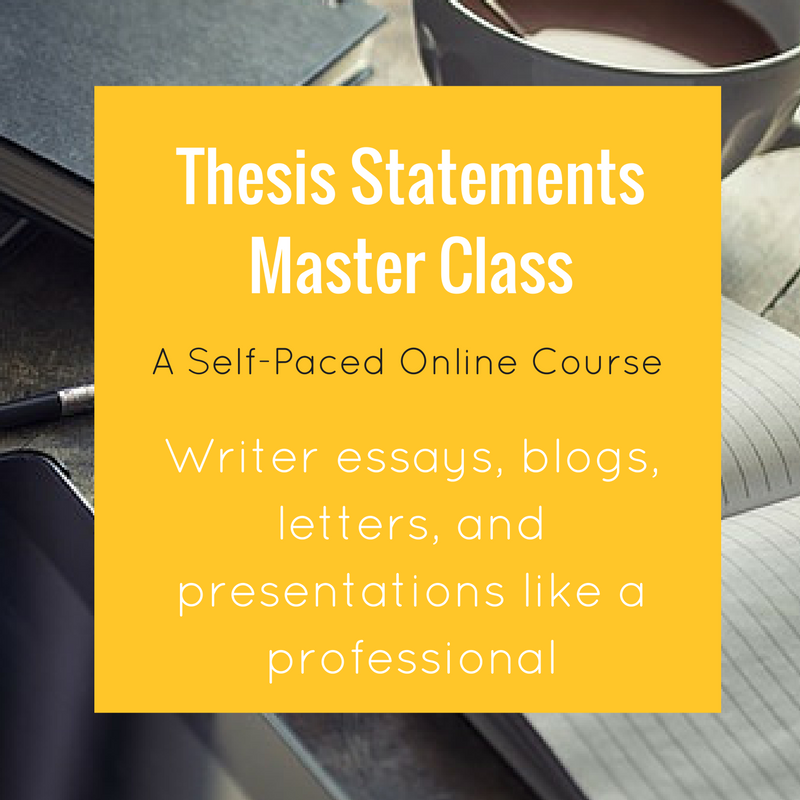
 RSS Feed
RSS Feed